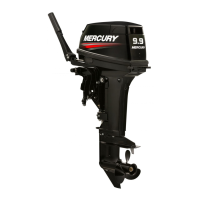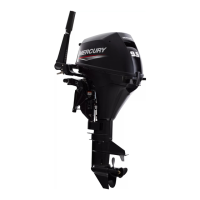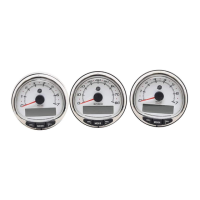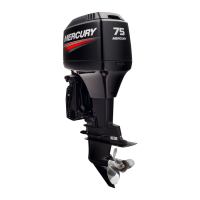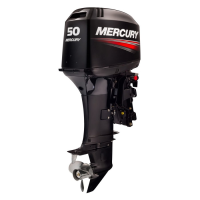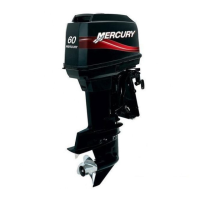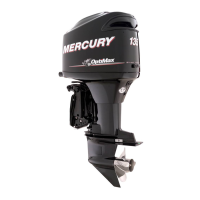90-830234R3 DECEMBER 1997 FUEL SYSTEM - 3C-9
Bleeding Air from Oil
Injection System
IMPORTANT: If air exists in either oil pump hose
(inlet or outlet), the air MUST BE bled from the
hose(s) before operating engine.
Bleeding Air from Oil Pump Inlet Hose
1. With engine not running, place a shop towel be-
low the oil pump. Loosen bleed screw three to
four turns and allow oil to flow from bleed hole un-
til no air bubbles are present in inlet hose. Torque
bleed screw to 25 lb. in. (2.8 Nm). This procedure
also allows oil pump to fill with oil.
a
b
a - Bleed Screw
b - Inlet Hose
Bleeding Air from Oil Pump Outlet
Hose
1. Purge air from outlet hose, by running engine at
idle speed, until no air bubbles are present in out-
let hose.
a
a - Outlet Hose
Oil Pump Test
NOTE: A graduated container is required to perform
this test.
1. Connect engine to remote fuel tank containing a
50:1 fuel/oil mixture (25:1 if during break-in peri-
od).
2. Attach flush device to outboard or place outboard
in test tank.
3. Remove top cowling.
4. Disconnect oil outlet hose from fuel pump fitting.
5. Plug fuel line fitting.
6. Remove link rod end from oil flow regulator.
7. Rotate oil pump regulator full counterclockwise
and hold it in this position, (wide-open pump posi-
tion).
8. Attach an accurate service tachometer to engine.
9. Place end of hose into graduated container.
a
c
d
b
a - Outlet Hose
b - Fuel Line Fitting
c - Link Rod End
d - Pump Regulator
10. Run engine at 700 RPM for 15 minutes.
11. Stop engine. Check amount of oil pump dis-
charge. For 3 cylinder engines, discharge should
be 18.7 cc minimum. For 4 cylinder engines, dis-
charge should be 25.5 cc minimum.
NOTE: Pump output specifications are derived at
70
°
F (56.7
°
C) degrees room temperature. Cooler or
warmer test temperature will result in LESS oil pump
discharge.

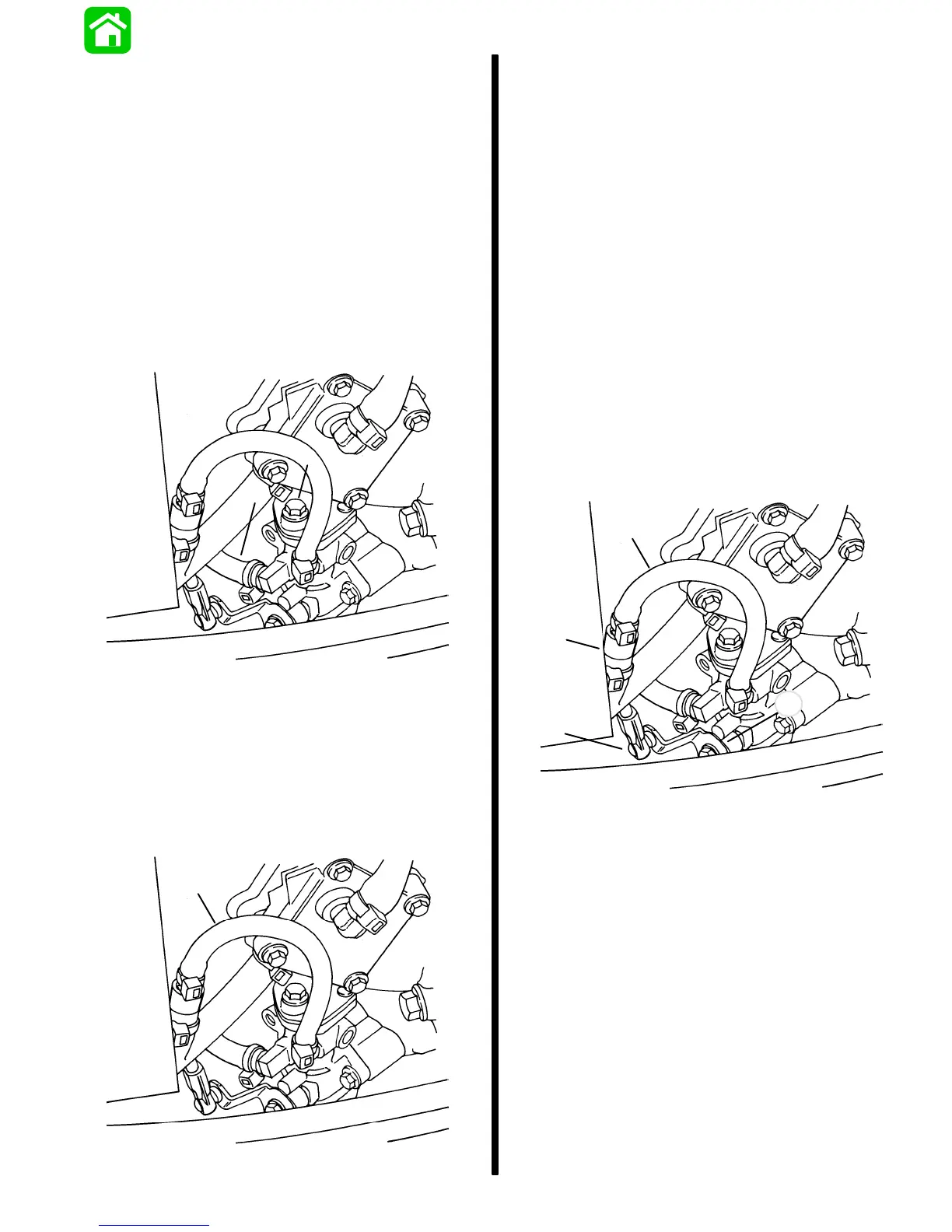